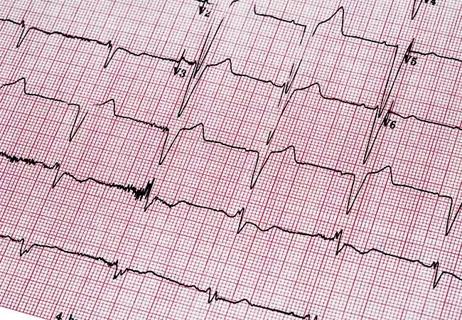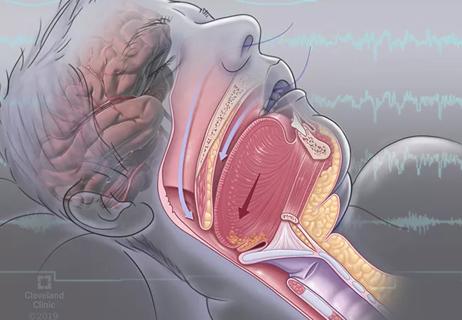LAA closure may be compelling option in atrial fibrillation ablation patients at high risk of both stroke and bleeding

For patients with atrial fibrillation, left atrial appendage closure (LAAC) is a reasonable alternative to oral anticoagulation (OAC) in the post-ablation setting regardless of patients’ stroke risk level, according to a subanalysis of the OPTION clinical trial. The findings were presented in a late-breaking clinical science session at the European Society of Cardiology Congress 2025 by Oussama Wazni, MD, MBA, Section Head of Cardiac Electrophysiology at Cleveland Clinic.
Advertisement
Cleveland Clinic is a non-profit academic medical center. Advertising on our site helps support our mission. We do not endorse non-Cleveland Clinic products or services. Policy
“In patients at both high and lower stroke risk, LAA closure was equally effective as oral anticoagulation while being associated with fewer bleeding events,” says Dr. Wazni, principal investigator of the OPTION trial. “This means that LAA closure can be an especially good option for ablation patients at high risk of stroke if they discontinue oral anticoagulation due to bleeding.”
OPTION directly compared LAAC with OAC after atrial fibrillation ablation in 1,600 patients, all of whom had an elevated CHA2DS2-VASc score, indicating moderate to high stroke risk. Patients were randomized 1:1 to undergo LAAC (using the Watchman FLX device) or to continue OAC following ablation. The trial followed patients for 36 months.
The study’s primary findings (N Engl J Med. 2025;392:1277-1287) were as follows:
“These findings established LAA closure as equally effective with a significantly lower risk of bleeding,” Dr. Wazni says. “Because thromboembolic risks remain even after catheter ablation, understanding the relative safety and efficacy of the options of LAA closure and oral anticoagulation across various levels of stroke risk is critical for choosing the best stroke prevention strategy for individual patients. That’s why we undertook this new subanalysis.”
Advertisement
Stroke risk in OPTION was assessed using the CHA2DS2-VASc scale, which ranges from 0 (low) to 9 (high). Eligibility for the trial began at a CHA2DS2-VASc score of at least 2 for men and at least 3 for women. Randomization was stratified by CHA2DS2-VASc score, with a mean score of 3.5 in both treatment arms. More than 90% of patients had a score from 2 to 5.
The current subanalysis compared outcomes in OPTION between patients with high stroke risk, defined as a CHA2DS2-VASc score ≥4, and patients with lower stroke risk, defined as a CHA2DS2-VASc score ≤3. The two treatment arms comprised comparable numbers of patients in each stroke risk group, as shown in the table:
| LAAC (n) | OAC (n) | |
|---|---|---|
| High stroke risk | 370 | 368 |
| Lower stroke risk | 433 | 429 |
| High stroke risk | ||
| LAAC (n) | ||
| 370 | ||
| OAC (n) | ||
| 368 | ||
| Lower stroke risk | ||
| LAAC (n) | ||
| 433 | ||
| OAC (n) | ||
| 429 |
Across the cohort, patients at high stroke risk were disproportionately female and older (≥75 years) and had higher rates of comorbidities.
Efficacy analysis showed that the composite endpoint of death, stroke or systemic embolism occurred at similar rates with LAAC and OAC in both stroke risk groups:

Additionally, three-year rates of ischemic stroke or systemic embolism were statistically the same between treatment arms in both the group at high stroke risk (P = .29) and the group at lower stroke risk (P = .11).
Bleeding analysis showed that rates of nonprocedural bleeding were significantly lower with LAAC in both stroke risk groups, with the differences driven primarily by clinically relevant nonmajor bleeding:

Nonprocedural bleeding rates were absolutely higher with OAC than with LAAC across all individual CHA2DS2-VASc score levels; the differences were statistically significant for the cohorts with CHA2DS2-VASc scores of 2 and 3. LAAC procedural bleeding rates were approximately 1% in each stroke risk group.
Advertisement
Dr. Wazni says that while these results signal comparable efficacy and lower bleeding risk with LAAC versus OAC in this setting regardless of stroke risk level, this subanalysis was not sufficiently powered to draw definitive conclusions on the primary endpoints. “Also, few patients in OPTION had very high or very low CHA2DS2-VASc scores, so our understanding of outcomes among patients with those stroke risk profiles is limited,” he notes.
“To reduce risk of stroke, best practice for most patients has been to continue anticoagulation even after a successful AF ablation procedure,” adds Tyler Taigen, MD, Co-Director of Electrophysiology Laboratories at Cleveland Clinic. “This most recent analysis of OPTION is important because it demonstrates effective stroke prevention and less bleeding in patients who received the LAAC device, including those at highest risk. As a physician, I can now offer LAAC with confidence to my patients undergoing AF ablation who are unable to remain on blood thinners long term.”
The OPTION trial was funded by Boston Scientific, which markets the LAAC device used. Dr. Wazni reports that he has served as a consultant and speaker for Boston Scientific. Dr. Taigen reports consulting for Boston Scientific and Medtronic.
For further perspectives on the OPTION trial, listen to the below episode of Cleveland Clinic's Cardiac Consult podcast for medical professionals.
Advertisement
Advertisement

UK experts compare and contrast the latest recommendations

While results were negative for metformin, lifestyle counseling showed surprising promise

Investigational pulsed-field ablation system also yielded procedural efficiencies

Concomitant AF ablation and LAA occlusion strongly endorsed during elective heart surgery

ACC/AHA panel also upgrades catheter ablation recommendations

For the first time, risk is shown after accounting for underlying contributions of pulmonary disease

Retrospective analysis finds “hypoxic and sleepy” subtype to confer greatest risk

Network proximity and EHR analyses identify diabetes drug as a top candidate for risk reduction